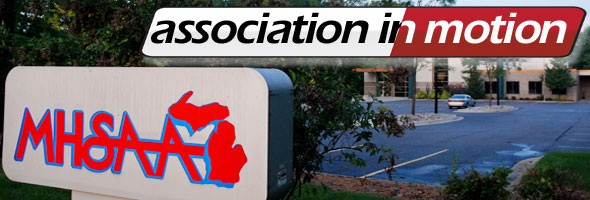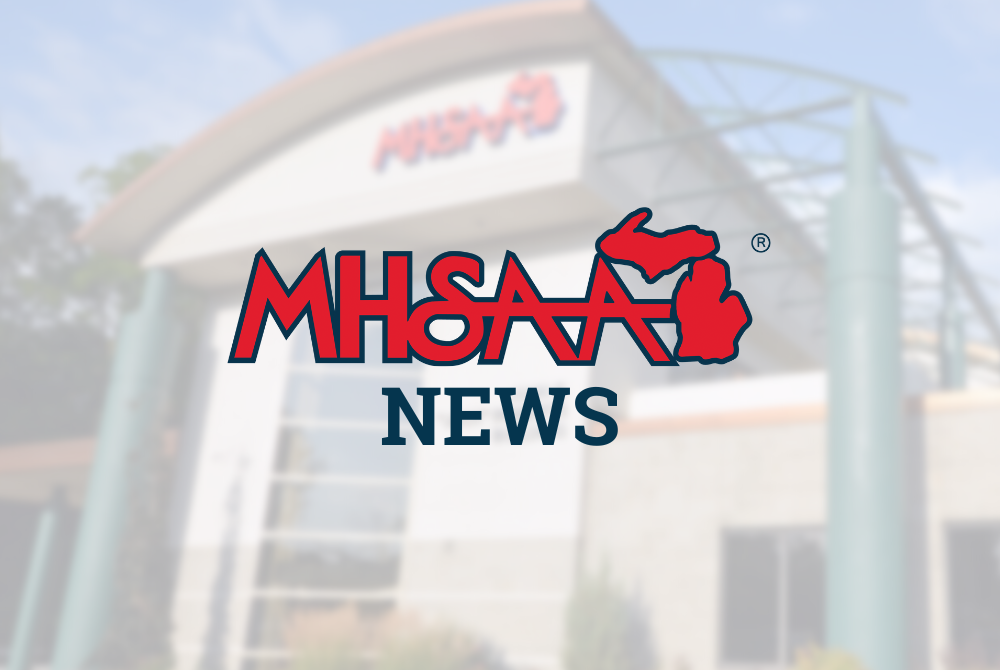
Participation Fee Numbers Hold Steady
June 27, 2012
Although the use of participation fees to help fund interscholastic athletics in Michigan high schools has doubled during the last nine years, the percentage of schools assessing them has held steady over the last two, according to surveys taken by the Michigan High School Athletic Association of its member institutions.
The most recently completed survey indicates that of 514 member schools participating, 260 schools – 50.5 percent – charged participation fees during the 2011-12 school year. In the 2010-11 survey, fees were being used at 50.4 percent of schools participating.
There were 763 senior high schools in the MHSAA membership this school year – the survey generated a response rate of 68 percent. This was the ninth survey of schools since the 2003-04, when members reported that fees were being used in 24 percent of schools.
The most recent survey also showed that fees incurred by students who paid once for an entire year of participation increased slightly from 2010-11 to 2011-12 – although the maximum fee per family decreased slightly.
The most popular method of assessing participation fees continues to be a payment for each sport an athlete goes out for, used by 41.5 percent of schools in 2011-12. That median fee among schools in the survey has increased only $5, to $75, since 2009-10.
A standardized annual fee per student was used by 24.5 percent of schools in the past year. Since Fall 2003, that fee has increased from $75 to $120 – a 60 percent increase – with the fee increasing $20 per athlete from 2010-11 to 2011-12.
Beginning with the 2004-05 survey, schools were asked in the survey if they had a cap on what individual student-athletes and families could be charged. Caps on student fees have been used by the majority of schools, but that number has dropped from 71.3 percent in 2004-05 to 55 percent in 2011-12. However, the number of schools instituting a cap on what a family pays has increased from 41 percent having a limit in 2004-05 to 49 percent in 2011-12.
Other data from the 2011-12 survey shows 64.5 percent of schools with participation fees have some kind of fee reduction or waiver program in place based on existing programs for subsidized lunch and milk (down from 68 percent in 2010-11); that 14 percent of schools using fees report a drop in participation; and that slightly more than one percent of schools report losing students to other school districts because they are charging fees. Five percent of schools not assessing fees in 2011-12 report transfers to their districts because of the absence of fees. Also, seven percent of schools not assessing fees had done so previously.
The survey for 2011-12 and surveys from previous years can be found on the MHSAA Website by clicking on Schools – Administrators – Pay-To-Play Resources.

Baseball's Record-Setting Spectatorship Headlines MHSAA's 2024-25 Attendance Report
By
Geoff Kimmerly
MHSAA.com senior editor
December 12, 2025
An overall attendance record in baseball and several more all-time bests for specific rounds of other sports’ postseason tournaments kept attendance at Michigan High School Athletic Association events near 1.4 million spectators for the third-straight school year in 2024-25.
Total, MHSAA Tournament events drew 1,397,574 spectators at competitions for which admission is charged – which counts all MHSAA-sponsored sports except golf, skiing and tennis, as single tickets are not sold for those postseason events. The total of just under 1.4 million spectators is a decrease of 3.6 percent from 2023-24, but still the third-highest overall attendance over the last eight school years.
Attendance at girls events for 2024-25 was 453,320 fans, a 3.9-percent decrease from the 2023-24 record-setting total but the second-highest over the last eight years.
The boys attendance of 944,254 was 3.4 percent fewer than the previous year. However, baseball set an overall tournament record with 65,150 spectators, with records as well of 38,086 at the District level and 7,517 attending Quarterfinals. Every round of the baseball postseason saw an increase from the previous year.
Overall attendance totals for the ice hockey, team wrestling, gymnastics, boys soccer and girls swimming & diving postseason tournaments also were up from 2023-24. Ice hockey set records at its Semifinals (7,758 spectators) and Finals (7,857), boys soccer at the District level (18,219) and team wrestling also at its Finals (11,604).
Football remains the most-attended MHSAA Tournament sport and drew 361,139 spectators for its playoff series – a decrease of just above a half-percent from the previous year but with the highest Finals turnout (44,535) since 2019-20. Boys basketball attendance remained second across all seasons at 251,668 spectators, followed by girls basketball at 145,313 and girls volleyball at 110,927.
Track & field (41,418 spectators) and softball (47,763) posted their second-highest attendances on record after setting records during the 2023-24 school year.
The MHSAA is a private, not-for-profit corporation of voluntary membership by more than 1,500 public and private senior high schools and junior high/middle schools which exists to develop common rules for athletic eligibility and competition. No government funds or tax dollars support the MHSAA, which was the first such association nationally to not accept membership dues or tournament entry fees from schools. Member schools which enforce these rules are permitted to participate in MHSAA tournaments, which attract more than 1.4 million spectators each year.

